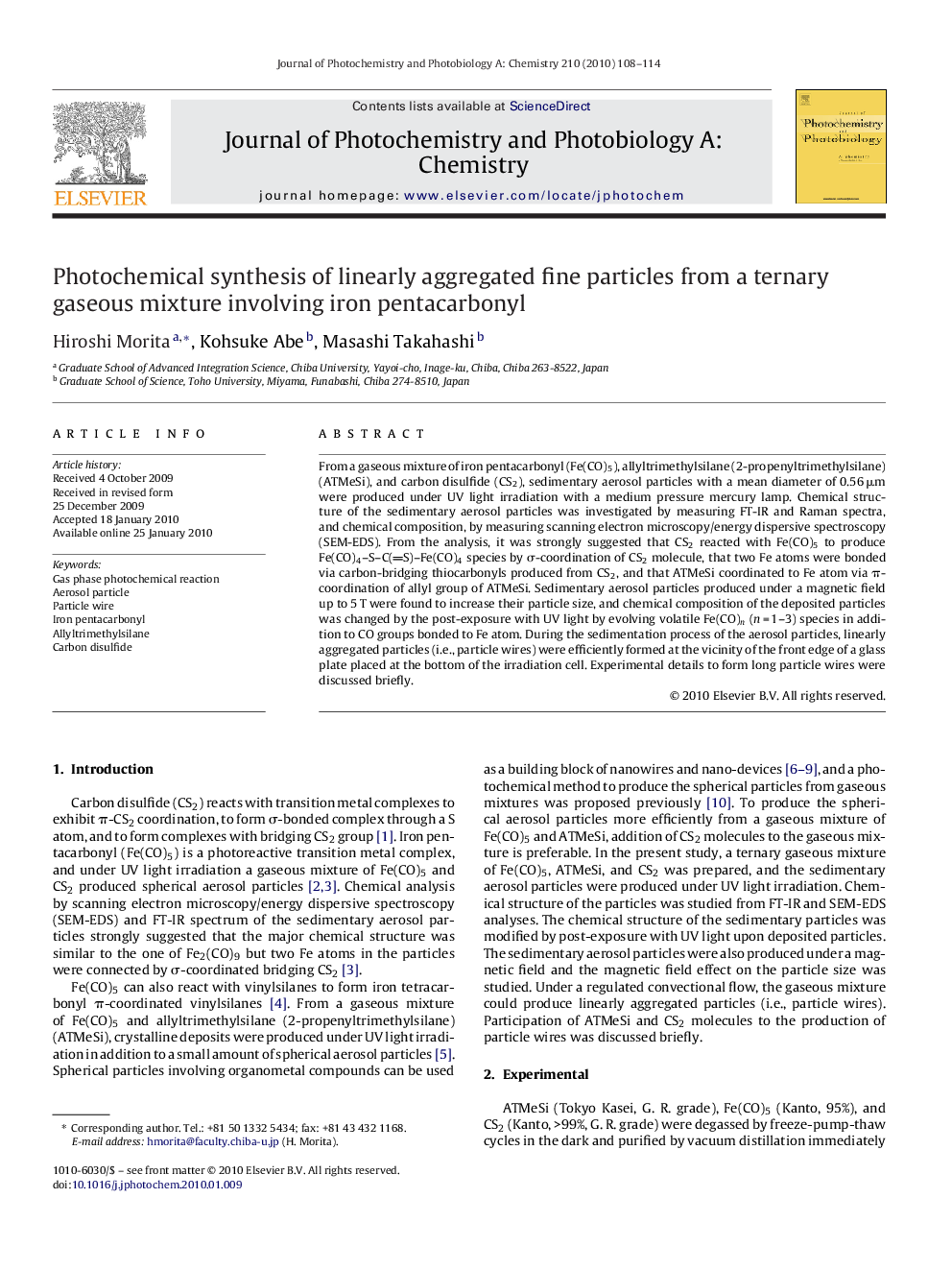| Article ID | Journal | Published Year | Pages | File Type |
|---|---|---|---|---|
| 27033 | Journal of Photochemistry and Photobiology A: Chemistry | 2010 | 7 Pages |
From a gaseous mixture of iron pentacarbonyl (Fe(CO)5), allyltrimethylsilane (2-propenyltrimethylsilane) (ATMeSi), and carbon disulfide (CS2), sedimentary aerosol particles with a mean diameter of 0.56 μm were produced under UV light irradiation with a medium pressure mercury lamp. Chemical structure of the sedimentary aerosol particles was investigated by measuring FT-IR and Raman spectra, and chemical composition, by measuring scanning electron microscopy/energy dispersive spectroscopy (SEM-EDS). From the analysis, it was strongly suggested that CS2 reacted with Fe(CO)5 to produce Fe(CO)4–S–C(S)–Fe(CO)4 species by σ-coordination of CS2 molecule, that two Fe atoms were bonded via carbon-bridging thiocarbonyls produced from CS2, and that ATMeSi coordinated to Fe atom via π-coordination of allyl group of ATMeSi. Sedimentary aerosol particles produced under a magnetic field up to 5 T were found to increase their particle size, and chemical composition of the deposited particles was changed by the post-exposure with UV light by evolving volatile Fe(CO)n (n = 1–3) species in addition to CO groups bonded to Fe atom. During the sedimentation process of the aerosol particles, linearly aggregated particles (i.e., particle wires) were efficiently formed at the vicinity of the front edge of a glass plate placed at the bottom of the irradiation cell. Experimental details to form long particle wires were discussed briefly.
